ABSTRACT
Shanghai was primarily an industrial city from the 19th century to the 20th century. By serving as a carrier of time, the past industrial architecture in Shanghai is invested with the collective memory of its past inhabitants. Now that Shanghai has entered the post-industrial period, according to the Shanghai 2035 Urban Plan, the Yangshupu Industrial Zone will be transformed into a new Central Activity Zone.1 As a result of this plan, old residential neighborhoods nearby will be demolished and replaced by new high-rise residential buildings. The relationship between old residential areas and industrial buildings will be uprooted. Memories of industry will fade over time.
The gasometers located in Yangshupu Industrial Zone condense the memory of industrial work over that period. Today they have fallen inactive, becoming silent symbols. Is it possible to reconstruct a place within the gasometers for the old residents, new residents and younger generation to learn or retrieve the spirits of the industrial memory in Shanghai? How do you save the industrial memory? What is the relationship between the new community and the industrial buildings? By reorienting the gasometer in the context of modern time and space, these industrial ‘symbols’ will communicate meaning: The gasometers can be a place for old and new Shanghai residents and the younger generation to know and inherit their past. Adaptive reuse of the gasometers is a stand against the erasure of historical memory through high-speed development. The gasometers will be containers of time.
As Jan Assmann wrote,“ ... collective memory operates simultaneously in two directions: backward and forward. It not only reconstructs the past but it also organizes the experience of the present and the future.” 2 By including the community centers, the gasometers also provide an opportunity to the old Shanghai residents, new Shanghai residents of the surrounding residential towers and the new younger generation without industrial heritage, to share their memories and develop community trust and intimacy. Memory nourishes self-identity and social-identity. The individual will reconstruct their self-identity and social-identity in this place of memory. In this way, the residents of Shanghai will be rooted to the land. By protecting the historical value of the Shanghai gasometers and connecting the community to the city's industrial history, the future will be built with a better understanding of the past.
YANGSHUPU INDUSTRIAL ZONE
Yangshupu Industrial Zone, sitting along the Huangpu River, starting from Qinhuangdao Road from west, Liping Road from east, saw the history of Shanghai’s modern industry. 3
Since Yangshupu Road was built in 19th century, factories began to appear in this area. During the 50 years from the 1880s to the 1930s, the industry flourished in Yangshupu Zone, especially the light industry and municipal industry. Until 1949, the hundreds of factories contribute 20% GDP of Shanghai and 5% GDP of China. The China’s earliest industrial paper mill, the largest dock, the first modern water factory, the earliest gas factory, GE’s first factory in China have been built in this area.
The Yangshupu Industrial Zone has the advantage of shipping and delivering because it is close to the Huangpu River. This lead to the Yangshupu Industrial Zone became the cradle of Shanghai’s modern industry, and soon became the resource gathering place for the residents nearby. However, after the railway and highway built in China, river transportation has been substituted by the road transportation. The Yangshupu Industrial Zone has lost its characteristics and advantages. 4
Image

▲ Map of Yangshupu Industrial Zone
YANGSHUPU GASOMETERS
Image
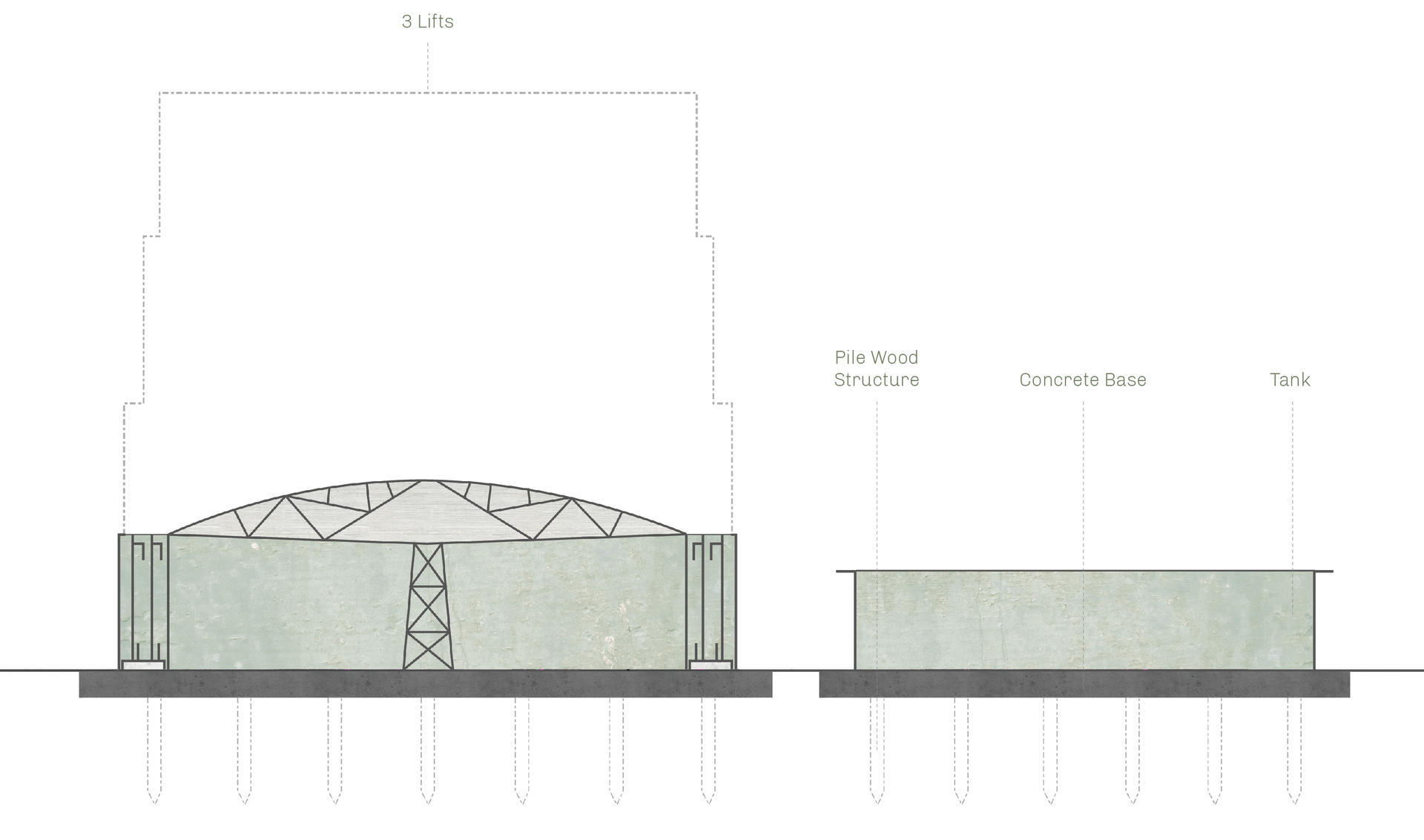
▲ Estimated Section of Yangshupu Gasometers
Shanghai Gas Company was located at No. 2524, Yangshupu Road, Yangpu District, Shanghai. The original buildings of Yangshupu Gas Factory have been demolished. Two gasometers and several office buildings are left in the site, which are listed as Heritage Architecture of Shanghai in 2016. 5
The side and top surface of the gasometers are formed by a large number of steel plates. The outer surface is further structured by steel ribs, and the top surface is equipped with a triangular steel truss. All plates and components are connected by rivets. The foundation is a wood pile foundation.
SHANGHAI 2035 URBAN PLAN
Since 2019, the Shanghai government is trying to transform the single-use industrial infrastructure of the Yangshupu Industrial Zone into a modern cluster, integrating commerce, leisure, tourism, culture, exhibition and other urban functions.6 During the transformation of the Yangshupu Industrial Zone, residential areas are facing demolition.
According to a report in November 2020, many local residents around the Yangshupu Industrial Zone have moved out. 7 In the future, there will be more high-rise residential buildings and commercial buildings nearby the Yangshupu Industrial Zone. The connection between old residents and industry will be broken.
Image
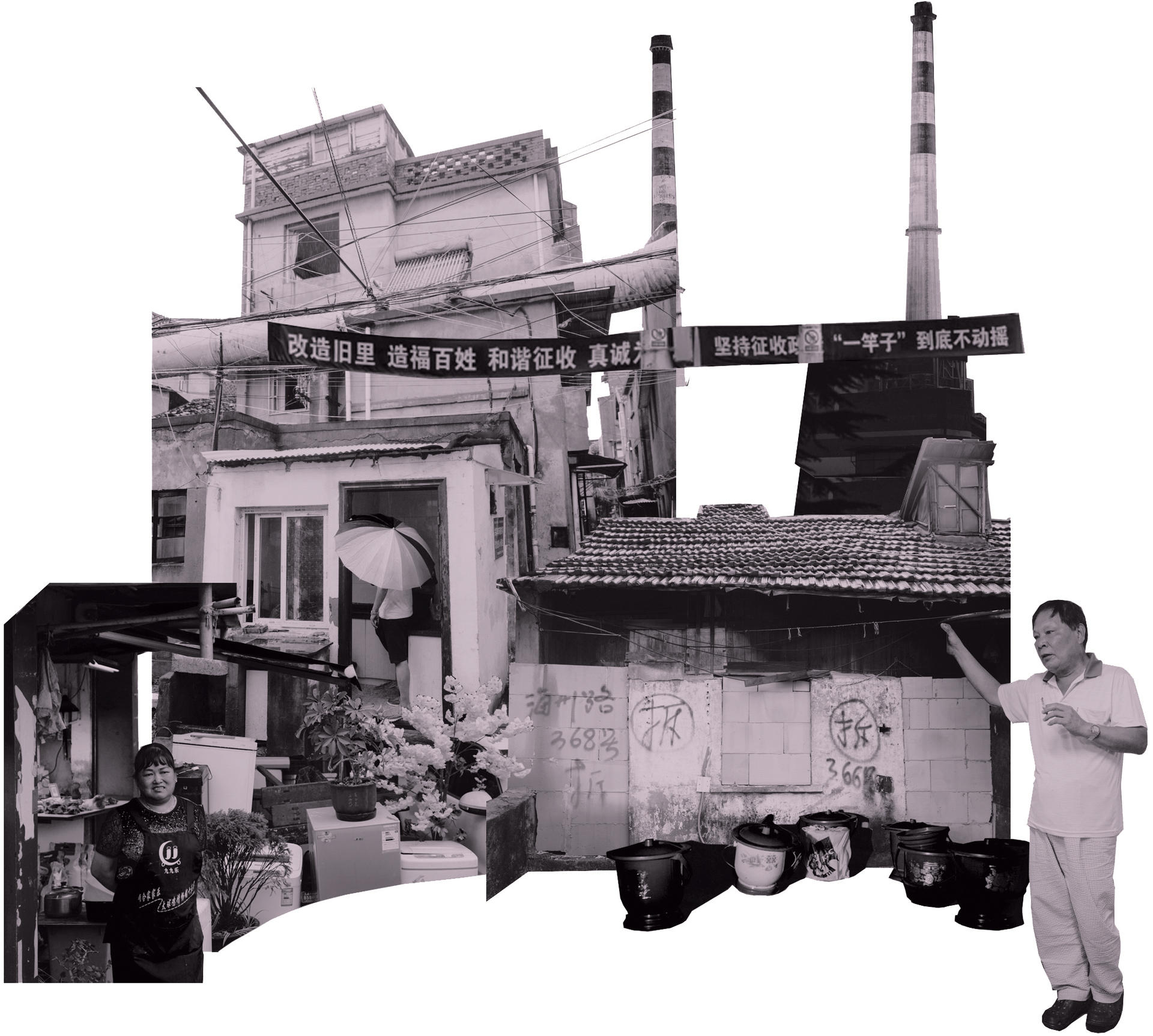
▲ Nostalgia of Yangshupu Old Residential Area
URBAN INTERVENTION
Image
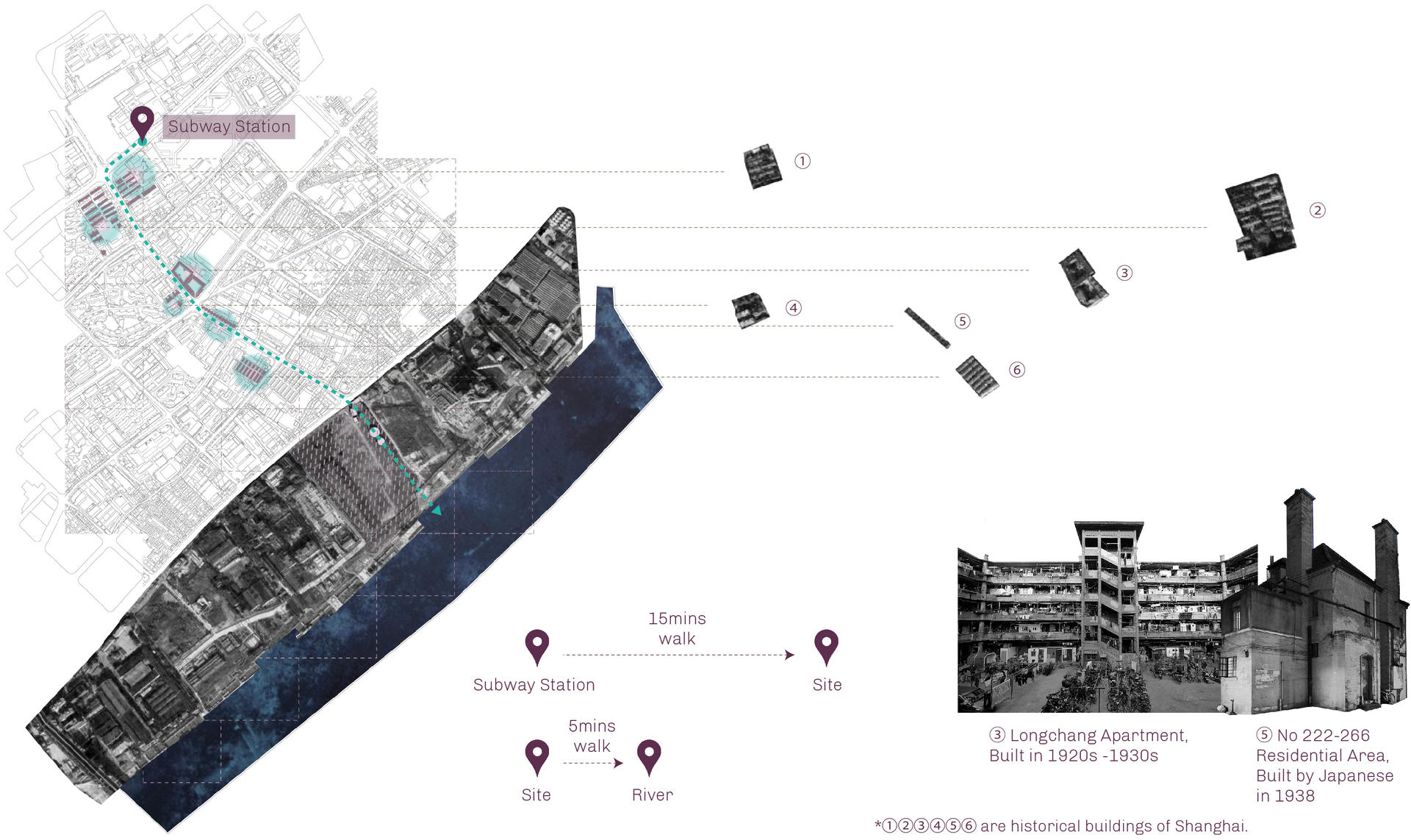
HOST INTERVENTION
Image
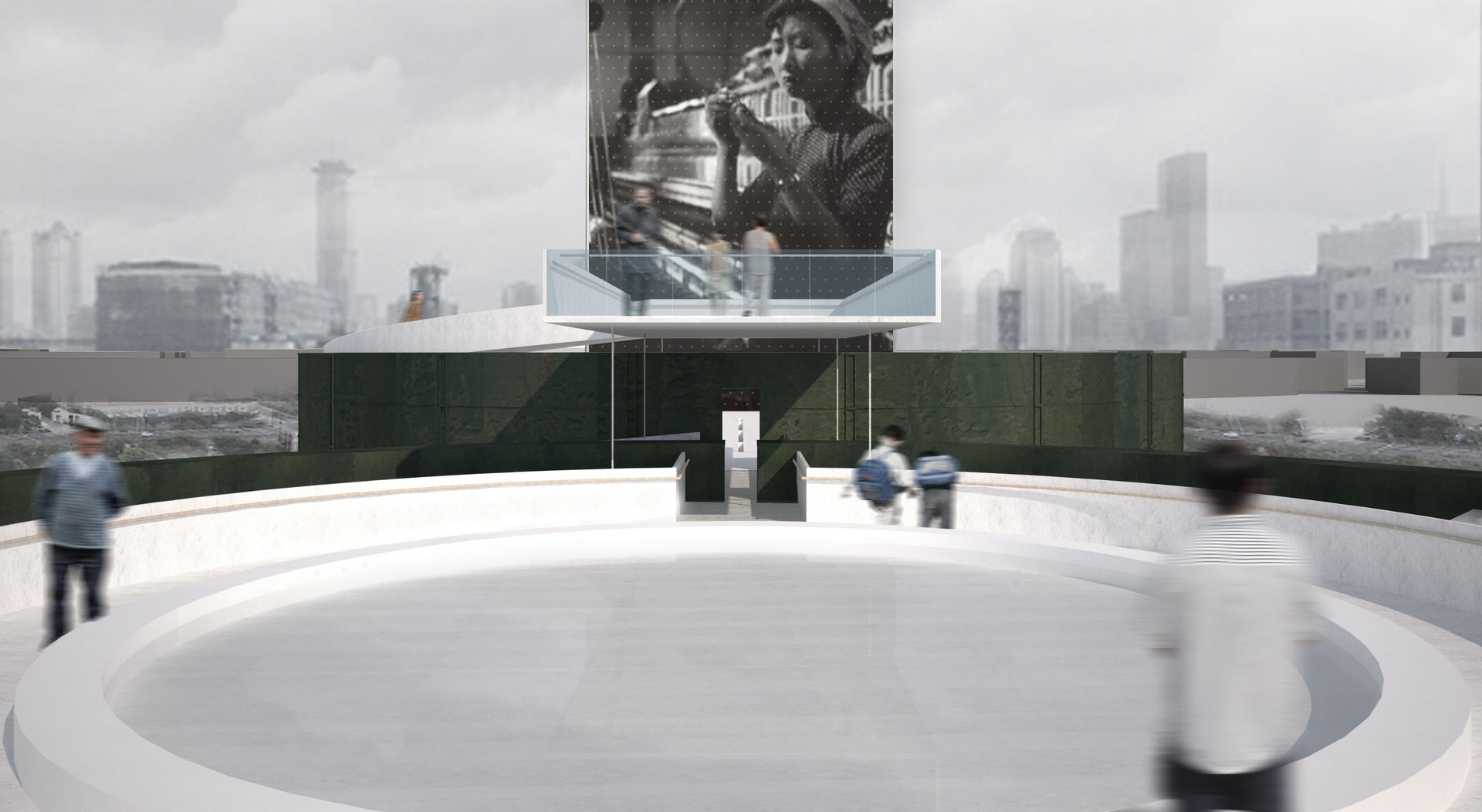
▲ Perspective Near the Reflecting Pool
Image
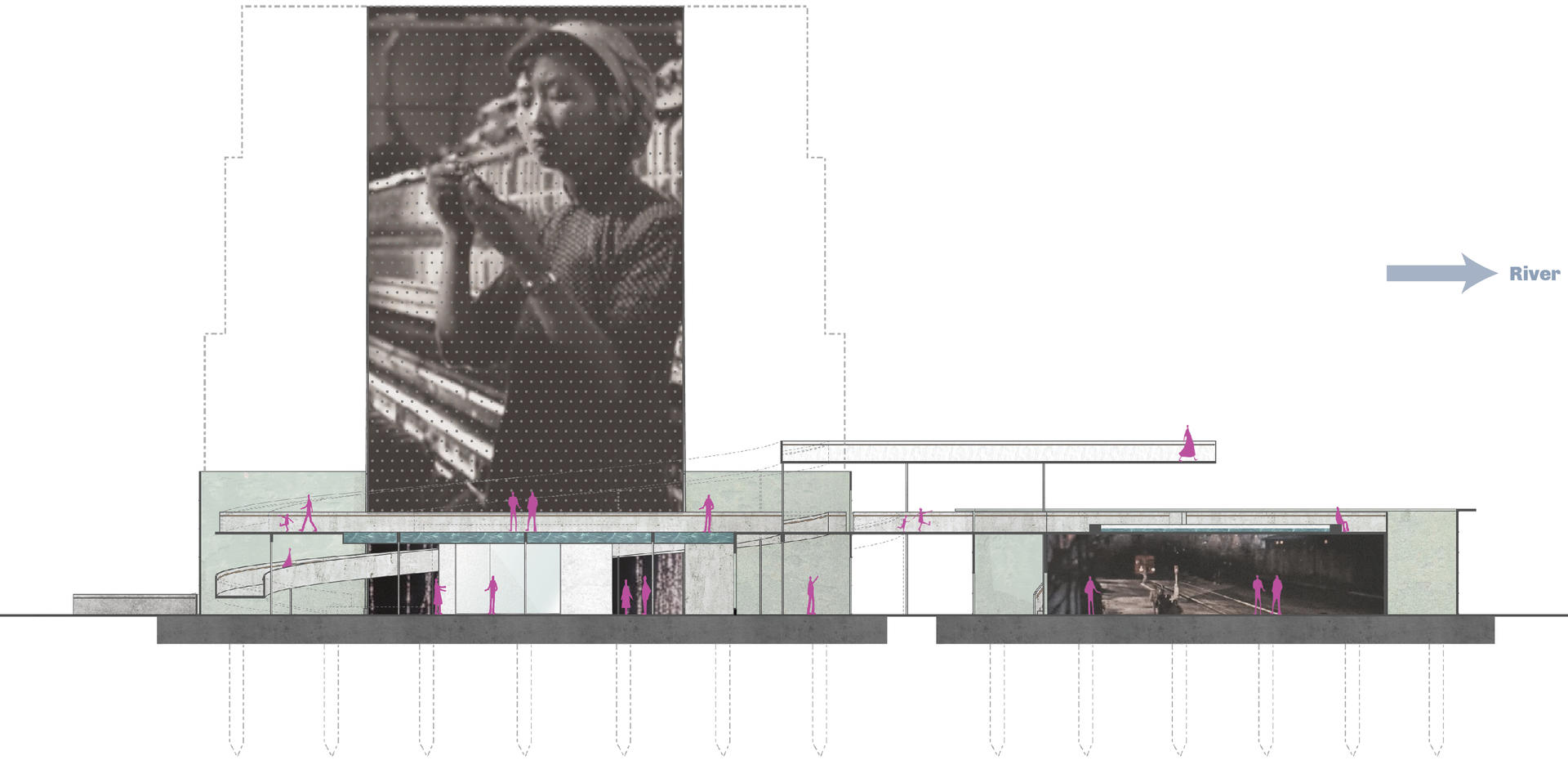
▲ Section
Image
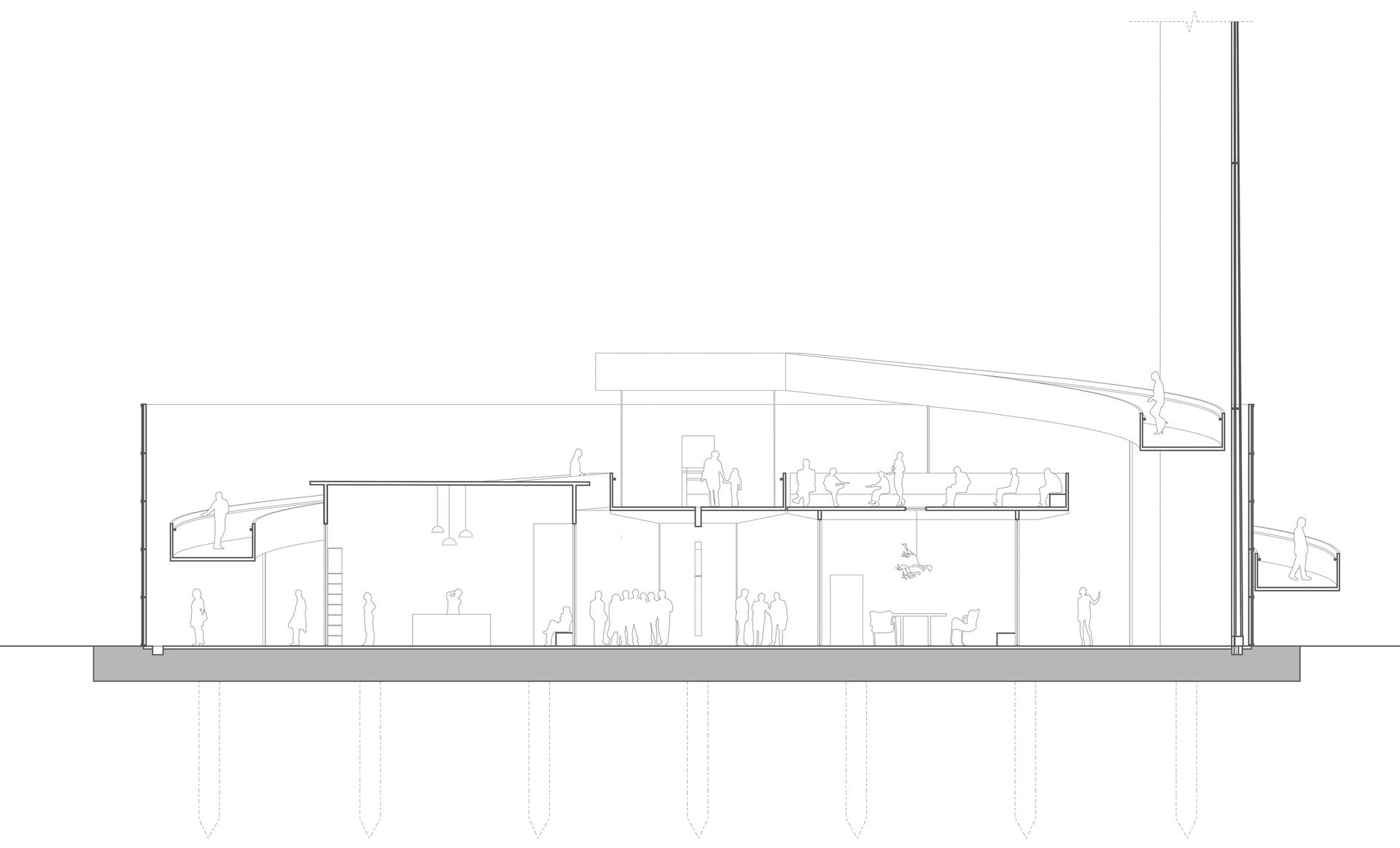
▲ Detail Section
Image

▲ Perspective under the Bridge
LANDSCAPE STRATEGY
Image
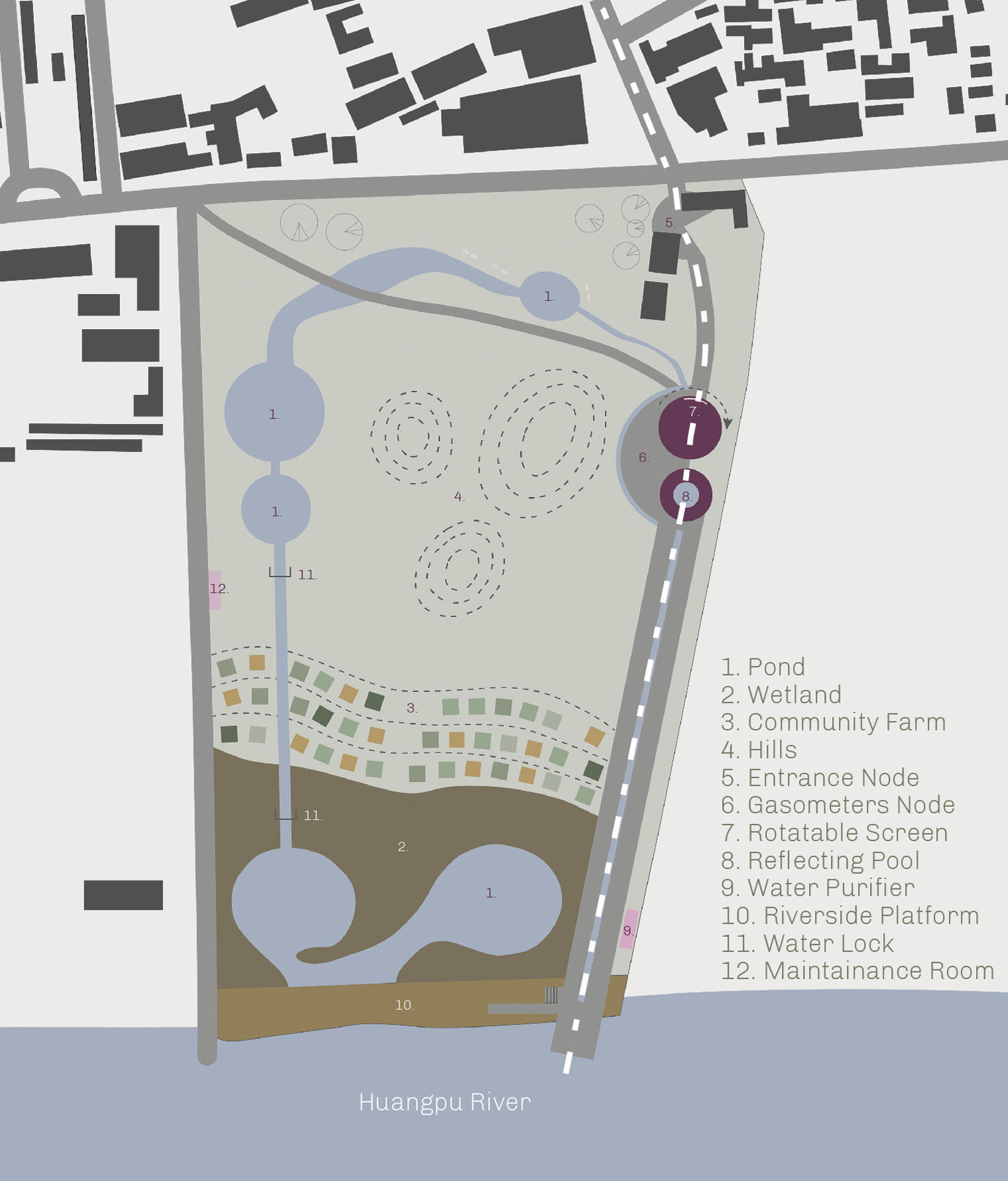
▲ Landscape Plan
Image
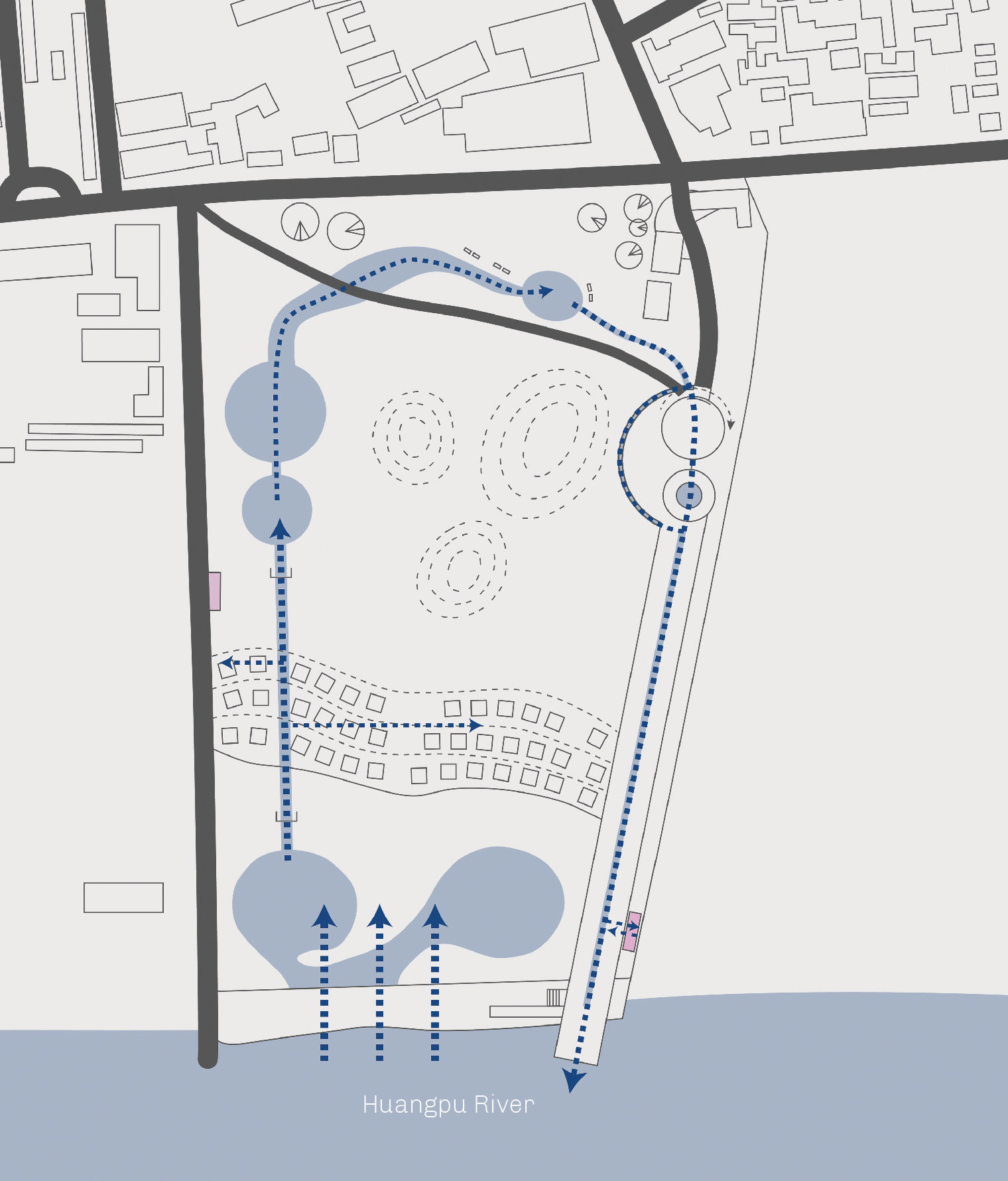
▲ Water Circulation Diagram
Water is an important element for this site. Yangshupu Industrial Zone was prosperous due to the water transportation of Huangpu River. In addition, water is also needed in the process of producing coal gas. Therefore, in the landscape design, water is incorporated as a metaphor of time: the water from Huangpu River seeps into the wetland on its north side, and then is transported upward by pumps to irrigate the community farm. After that, the water is continuing pumped into two ponds that mimic the form of gasometers. Then, the river comes to the city park near the street. The water comes to gasometers, to serve as space design elements, and finally, after the purifier, flows back to the river along the axis of the path.
Image
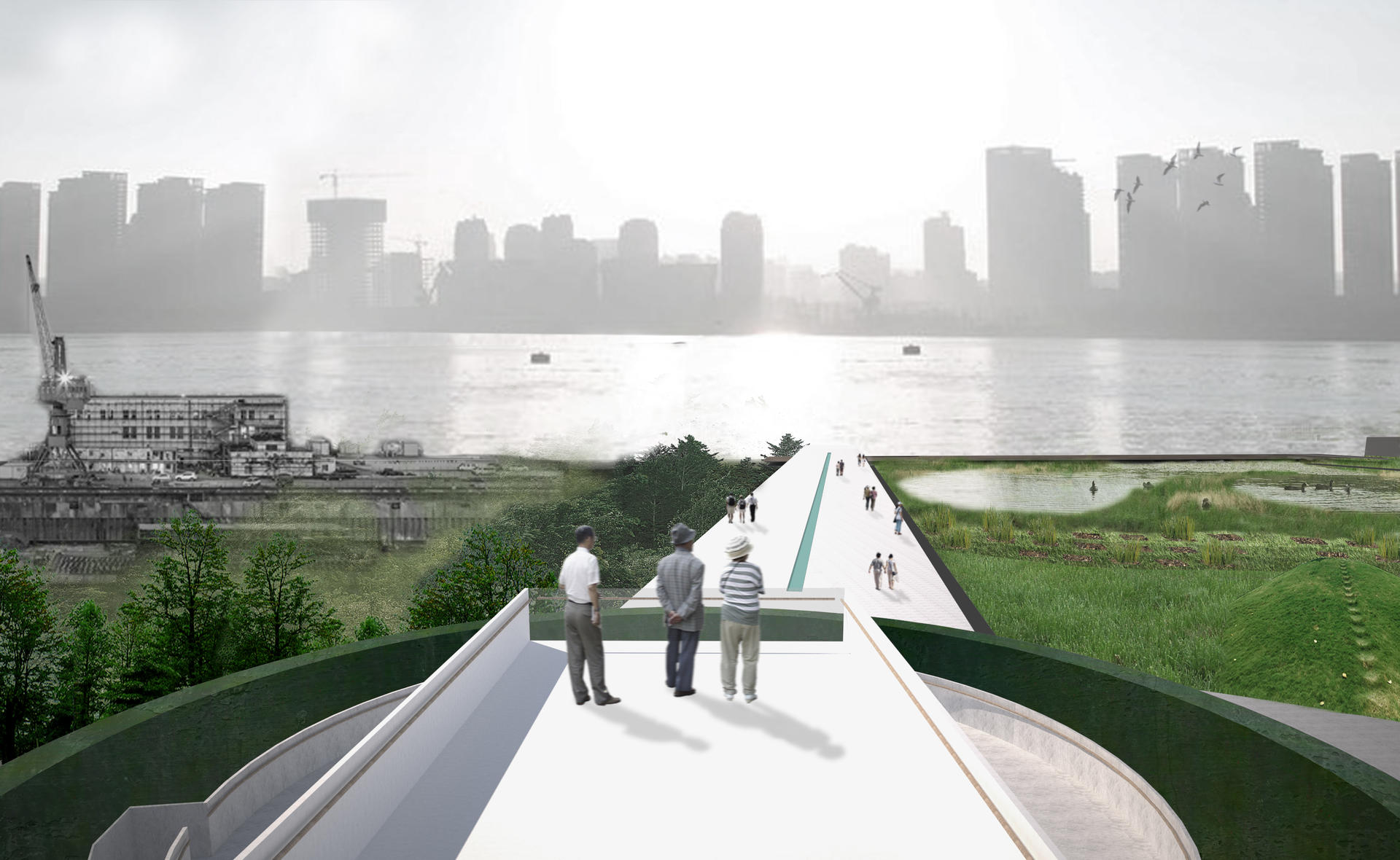
▲ Perspective on the Upper Bridge, Seeing the River
ENDNOTES
- Shanghai Government. “Shanghai 2035 Urban Plan.“ Shanghai Government. Accessed December 10, 2020. http://ghzyj.sh.gov.cn/cmsres/37/37cdf74da6804c58a3a82606221841c6/8c961… .
- Jan, Assmann. Cultural Memory and Early Civilization: Writing, Remembrance, and Political Imagination. United States of America: Cambridge, 2011.
- Yangpu Shanghai. “Everyone Knows This Big Road.“ Yangpu Shanghai. Accessed October 18, 2020. https://mp.weixin.qq.com/s/oj3QDSiedNfgG99DB-7jUA .
- Seeing Through Shanghai. “Seeing Through Shanghai, the Industrial Traces of Shanghai Yangshupu Zone.“ Seeing Through Shanghai. Accessed October 18, 2020. https://mp.weixin.qq.com/s/rp-DZNJORQiJvTGt19NGBw .
- Wikipedia. “Shanghai Heritage Architecture.” Wikipedia. Accessed December 10, 2020. https://zh.wikipedia.org/wiki/%E4%B8%8A%E6%B5%B7%E5%B8%82%E4%BC%98%E7%A….
- Xinhua Net. “Yangpu Industrial Rust Belt Has Been Transformed into a Beautiful Life Belt.“ Xinhua Net. Accessed December 10, 2020. http://www.xinhuanet.com/2020-09/26/c_1126542263.htm .
- Shiyu, Miao. “Two Situations in One Street.“ China Times. Accessed December 10, 2020. https://www.chinatimes.net.cn/article/102095.html .
